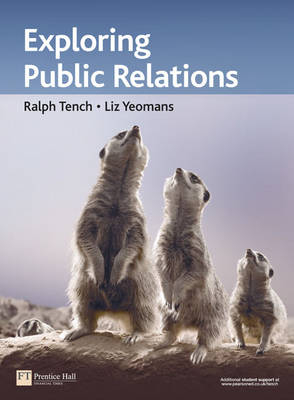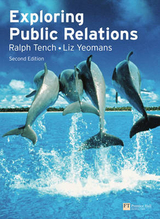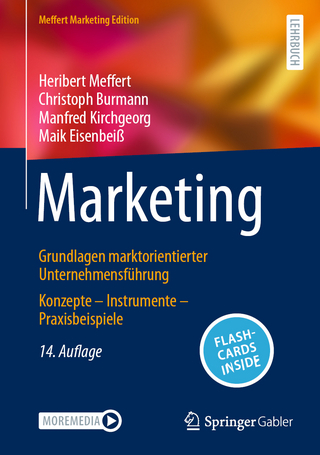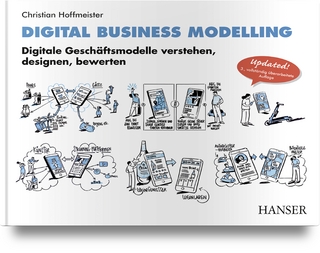
Exploring Public Relations
Prentice Hall (Verlag)
978-0-273-68889-1 (ISBN)
- Titel erscheint in neuer Auflage
- Artikel merken
This definitive academic Public Relations text introduces PR and its role within the organisation. A comprehensive text, Exploring Public Relations not only covers traditional academic PR theory, but also explores contemporary ideas. Divided into four key areas, the book covers: 1) The Context of PR 2) The Concepts of PR 3) PR Specialisms 4) PR in the public and private sector This book is written for both undergraduate and postgraduate students working towards a Public Relations degree. It is also appropriate for those studying PR as part of a Marketing, Media or Communications degree.
Guided tour About the authors Foreword Preface Acknowledgements Part I 1. Public relations origins: definitions and history, Lee Edwards Introduction Public relations definitions Public opinion: justifying public relations Business, politics and public relations: country case studies Summary Bibliography 2. Management and organisation of public relations, Anne Gregory Introduction Importance of context External environment Internal environment Systems theory Location of public relations in organisations Future of the public relations department Summary Bibliography 3. Role of the public relations practitioner, Meriel Pritchard, Johanna Fawkes and Ralph Tench Introduction Who are the public relations practitioners? Who does what: the bigger picture Role of the communicator What PR people do: individual practitioners Skills for the ideal practitioner Role of theory in practice Professionalism Education and research Summary Bibliography 4. Media context of contemporary public relations and journalism, Neil Washbourne Introduction Contemporary media context: the UK media industry Theories of media Regulating the media: from public interest to the market Public interest' Issues for PR arising from the global media environment Ethics of journalism and public relations Summary Bibliography 5. Public relations and democracy, Robert Leach Introduction Conditions for representative democracy Criticisms of modern democracy Elections and voting Elections and political parties Pressure groups and democracy Democracy and multilevel governance Public relations and modern democracy Summary Bibliography Websites 6. Community and society: corporate social responsibility (CSR), Ralph Tench Introduction Sustainable business: corporate social responsibility (CSR) Business case for corporate social responsibility: why be socially responsible? Organisational responsibilities to stakeholders Organisational responsibilities to society Regulatory frameworks Ethics and business practice Summary Bibliography Websites 7. International context of public relations, Gyorgy Szondi Introduction Defining international public relations (IPR) Factors and driving forces behind internationalisation International PR agency networks Global or local approaches to international public relations Structures of international public relations Special areas of international public relations PR for a supranational organisation: the European Union Critical voices in PR Professionalism on a global level: PR as a global profession Summary Bibliography Part II 8. Public relations theories an applied overview: systems theories, Lee Edwards Introduction Communications theory: laying the foundations Systems theories: emergence of public relations research Extending the systemic view Public relations as relationship management Changes abroad: shifts in society and technology Summary Bibliography 9. Public relations theories an applied overview: alternative theories, Lee Edwards Introduction Developing theory: alternative approaches Equity in public relations: considering women and minority groups New research directions Summary Bibliography 10. Public relations as planned communication, Anne Gregory Introduction Why planning is important Systems context of planning Approaches to the planning process Setting objectives Identifying publics Messages or content Strategy and tactics Timescales and resources Evaluation and review Summary Bibliography 11. Public relations research and evaluation, Rudiger Theilmann and Gyorgy Szondi Introduction Context of research in public relations Designing research Starting research Qualitative vs quantitative research Research methods Designing research instruments Research applications Evaluation Summary Bibliography 12. Audiences, stakeholders, publics, Gerard Choo Introduction The passive audience The active audience Stakeholders and publics New thinking on publics Summary Bibliography 13. Corporate image, reputation and identity, Daniel Lowensberg Introduction Organisational public relations Organisational image Organisational reputation Organisational identity Personality and culture Organisational identity, strategy and process: two models Summary Bibliography 14. Public relations, propaganda and the psychology of persuasion, Joanna Fawkes Introduction Public relations and propaganda Public relations and persuasion Who says: the question of credibility Says what: the nature of the message To whom: the audience perspective To what effect: forming and changing attitudes and beliefs Ethical persuasion: is it possible? Summary Bibliography Websites 15. Ethics and professionalism in public relations, Anne Gregory Introduction Importance of ethics and professionalism in public relations Definitions of ethics and morality Ethical theories (traditions) Duty to whom? Ethical issues in public relations Ethical decision-making models and their application Summary Bibliography Part III 16. Media relations, Richard Bailey Introduction Role of media relations Defining issue: advertising or public relations? Media relations principles Negotiated news: media relations in practice Media partnerships Old media, new media and me media Media relations techniques Summary Bibliography 17. Internal communication, Liz Yeomans Introduction Definition of internal communication Where it all began: the in-house journalist Skills to strategy Role and purpose of internal communication Employee perspective: just a job'? Segmenting internal publics Organisations: culture, leadership and strategic change Line manager role: listening and interpreting Communication channels Ethical communication Summary Bibliography 18. Managing community involvement programmes, Ralph Tench Introduction Corporate community involvement (CCI) programmes Employees and community programmes Cause-related marketing (CRM) Developing community programmes Evaluating community programmes Summary Bibliography Websites 19. Issues management, Paul Gillions Introduction Issues management: defining the field Context of issues management: the tipping point' Action planning: a framework for managing issues Summary Bibliography Websites 20. Crisis public relations management, Martin Langford Introduction Crisis public relations management: the context Crisis manageom? Communicating during a crisis The internet and public relations crisis management How to prepare for a crisis Key principles in crisis management Summary Bibliography Websites 21. Public relations and the consumer, Paul Willis Introduction What is consumer public relations? Tools and techniques The wonderful world of brands Key challenges Tomorrow's people Summary Bibliography 22. Business-to-business public relations, Dennis Kelly Introduction Core principles of business-to-business (B2B) public relations Trade journals and journalists Coordinating the communications disciplines Building corporate reputation Summary Bibliography Websites 23. Public affairs, Kevin Moloney Introduction Scope of public affairs Public affairs defined Contexts of public affairs Public affairs: knowledge, skills and behaviour needed Ethics and public affairs Summary Bibliography 24. Financial public relations (FPR), Ryan Bowd Introduction Overview of financial PR Landscape of the City': who's involved in financial PR Financial PR practice Summary Bibliography Websites 25. Public relations for information and communications technology: principles and planning, Lee Edwards Introduction ICT: background and social impact Industry characteristics ICT audience characteristics Public relations in the ICT industry: a model Principles of ICT public relations practices Summary Bibliography 26. Integrated marketing communications, Graham Hughes Introduction Definitions of integrated marketing communications (ICM) Strategic marketing communications planning Branding and integrated marketing communications Agency perceptions of integrated marketing communications Integrating the marketing communications mix Summary Bibliography Websites 27. Sponsorship, Sierk Horn Introduction Sponsorship: the context Defining sponsorship Management of sponsorship Features and characteristics of sponsorship Emotional marketing' and the emerging sponsorship age Summary Bibliography Part IV 28. Corporate communication, Emma Wood Introduction Definition of corporate communication and key terms Context and principles of corporate communication Interface of corporate communication and overall corporate strategy How corporate communication influences corporate decision making Corporate communication objectives: stakeholders vs shareholders Practical application of critical reflection Summary Bibliography 29. Campaigning organisations and pressure groups, Sue Wolstenholme Introduction Types of campaigning organisation Key issues for PR practitioners in organisations and campaigning groups Campaign tactics People, politics and globalisation Building and evaluating consensus Practical guidelines for campaigning public relations Summary Bibliography Websites 30. Public sector communication, Liz Yeomans Introduction Theories of public communication Central government communication Local government communication Health sector communication A communication planning framework Summary Bibliography Websites 31. Arts, leisure and entertainment public relations, Shirley Beresford and Johanna Fawkes Introduction Overview of the creative industries Concepts of culture Role of public relations in the creative industries PR objectives, strategies and tactics for organisations Trends and directions in the creative industries Summary Bibliography Websites 32. What next? Future issues for public relations, Ralph Tench and Liz Yeomans case study by Karl Milner Introduction Campaigning and pressure groups Internationalisation of public relations Publics Public relations identity Issues Technology Practitioner roles and professionalism in public relations Specialisation of public relations practice Media fragmentation Education Bibliography Index
| Erscheint lt. Verlag | 30.3.2006 |
|---|---|
| Sprache | englisch |
| Maße | 196 x 264 mm |
| Gewicht | 1250 g |
| Themenwelt | Wirtschaft ► Betriebswirtschaft / Management ► Marketing / Vertrieb |
| ISBN-10 | 0-273-68889-8 / 0273688898 |
| ISBN-13 | 978-0-273-68889-1 / 9780273688891 |
| Zustand | Neuware |
| Haben Sie eine Frage zum Produkt? |
aus dem Bereich



